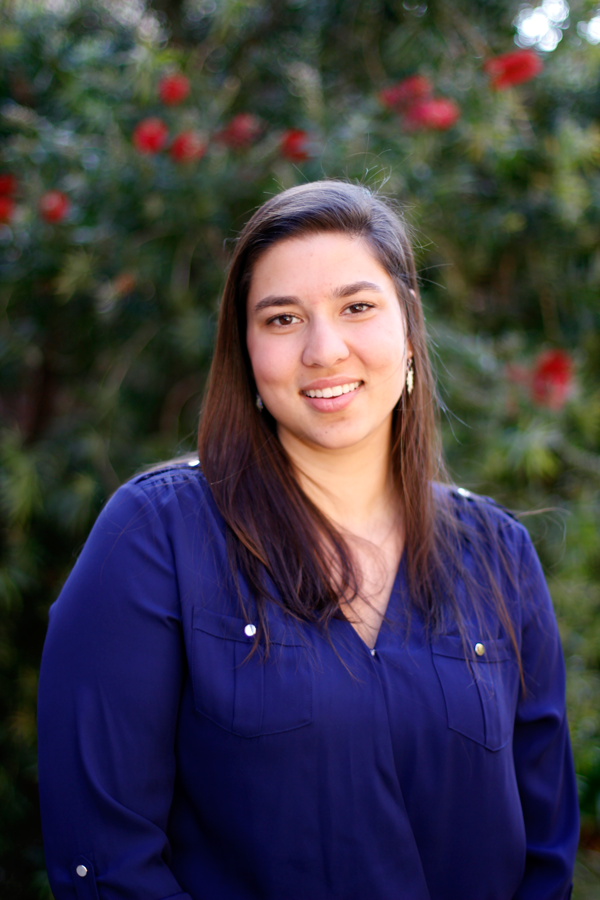Raine Sagramsingh, Class XVII

Raine Sagramsingh
Hometown: Bradenton, FL
Year: Senior
Major(s): Mechanical engineering
Originally from Bradenton, FL, Raine Sagramsingh has embraced Tallahassee and all it has to offer—including its homeless population.
As a freshman Service Scholar Sagramsingh wanted desperately to engage in service with Tallahassee's homeless population. With little information of how to get involved online Sagramsingh had to become resourceful. One day, after several failed calls and missing the right times to volunteer, Sagramsingh showed up at the door of a local homeless shelter ready to help. They made an exception, and she got right to work.
The shelter is an emergency facility that provides basic care including emergency housing and dinner. Sagramsingh folded laundry, distributed soap and shampoo, served dinner, and kept track of the logbook.
“I wouldn’t say I loved it—I didn’t have any experience working with the homeless,” she said. “But I knew I had to keep going back.”
Eventually, Tallahassee’s Kearney Center had its grand opening. The Kearney Center is an emergency service center whose mission is to reduce homelessness through the respectful care of Tallahassee’s homeless residents.
Sagramsingh went to volunteer the first night they opened their doors, despite having to leave Tallahassee the next day for a summer internship.
When she came back, the Kearney Center had completely taken off. She returned to volunteering, this time tasked with conducting follow-up interviews with clients who had received help from the center. The interviews she conducted helped to study how clients’ circumstances may have changed after leaving and coming back to the Kearney Center.
In this role Sagramsingh helped discover key issues at the Kearney Center including a policy that resulted in a lot of people staying at the center for sixty nights, and disappearing for thirty. She also learned that the interviews presented an opportunity for clients to share their thoughts on the significant impacts and drawbacks of the Kearney Center.
“A lot of the time, they don’t have the avenue to express that,” Sagramsingh said. “I had the chance to assess what clients saw as problems and take it to the staff to hopefully improve upon.”
Her continued experiences with service at homeless shelters made her aware of the causes of homelessness and potential remedies for it.
“This problem goes far beyond just getting someone into a house,” she said. “[At the Kearney Center,] we are looking at some of the biggest problems that I think are causing homelessness: mental health and incarceration.”
Most people who are homeless when they go to jail will remain homeless when they get out of jail, she explained. This is often due to the fact that criminal history may disqualify people from receiving assistance.
Sagramsingh recalled a client that had been sent to the Kearney Center from a mental health facility that was eventually arrested due to a small incident. Sagramsingh knew that on top of difficulties posed by his mental illness, the man would have to face searching for housing assistance with a criminal record.
“None of what happened to that man was the solution to his problem. It was definitely mishandled,” Sagramsingh said.
Despite this Sagramsingh believes, “The Kearney Center is moving forward to be comprehensive—to provide clients with resources outside of just housing, which I think is the most important part.”
Coordinating a fundraiser last fall with different organizations whose mission is to help people with reentry into society after prison is part of Sagramsingh’s contribution to this issue.
“You’re not going to get somebody off the streets if they don’t have the resources to be successful once they’re in a house.” Sagramsingh said.
Despite her passion for service Sagramsingh admits she is unsure of how service will manifest in her future.
“I cannot for the life of me find the connection between my mechanical engineering degree and my service, which I am so incredibly passionate about,” she said, laughing. “I always think in my head, you know, I’ll be a mechanical engineer for a little bit, but then I’ll go back to what I really care about. I hope that with time, I’ll find a way to use my engineering skills and knowledge to approach ending homelessness. I think it can be done.”
Sagramsingh believes the first step should be changing our definition of homelessness.
“I met a guy—he had a huge camp in the woods, all built up with a lot of things, and he said, ‘I’m not homeless, this is my home.’ And that is very valid,” she said. “But the question is, when you are in a place like that, what is the point at which you have to intervene and save someone’s life?”
To this, Sagramsingh says there is no right answer.
“I don’t know that we will ever eliminate homelessness, but we can certainly minimize the time that people spend being homeless.”
By Charlie Andelman


